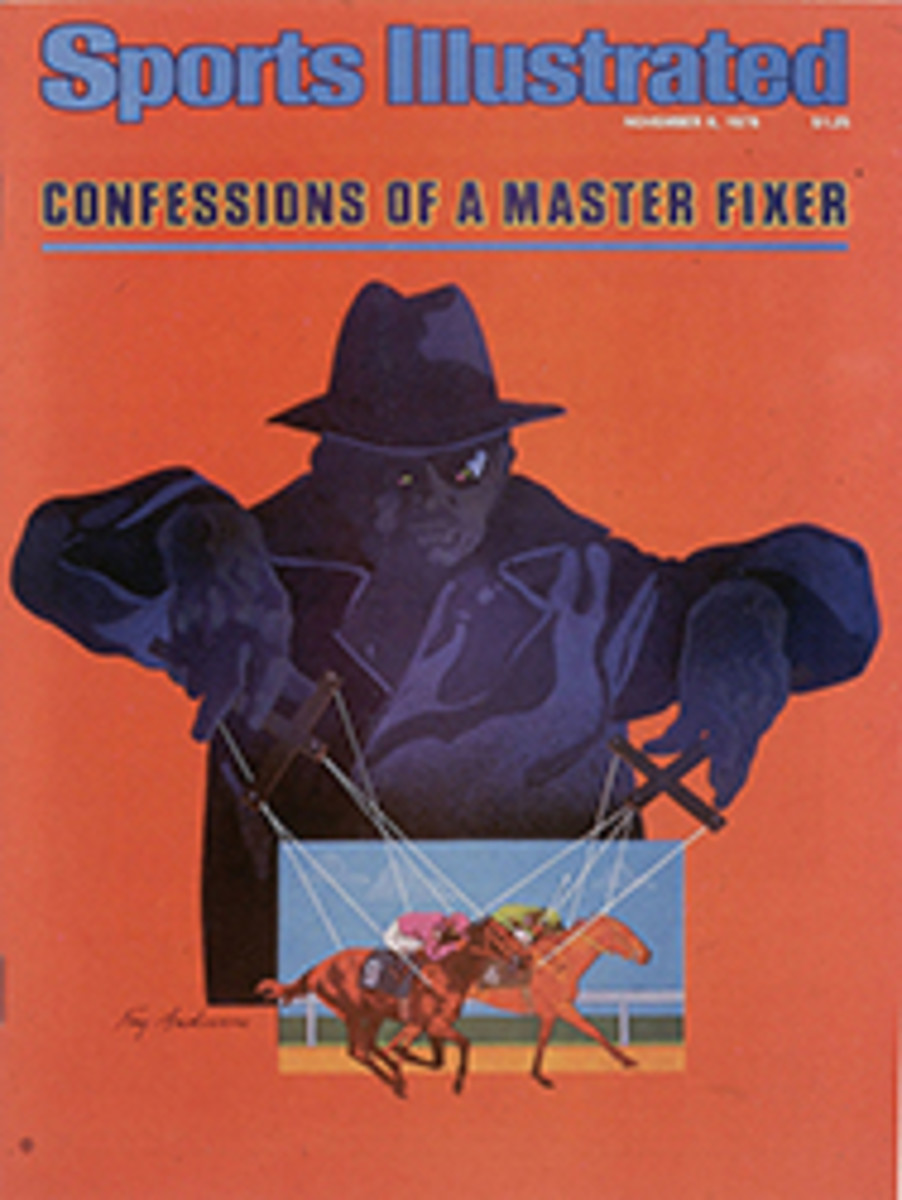
A grueling trip out of nowhere
For years the best volleyballs in the world were stamped MADE IN JAPAN. And the best women players came from that nation, too. Somehow the same country that produced the serene geisha also could produce the dervish defender who would fling herself around a court so adroitly and with such abandon that opponents felt they were smashing balls at a transistorized retrieving device devised by Hitachi.
But the Japanese weren't alone in regularly pounding U.S. women's volleyball teams. Even Peru trounced the U.S. This was especially humiliating because volleyball is as American as a Big Mac, having been invented by William G. Morgan of Holyoke, Mass. in 1895. By the time it became an Olympic sport in Tokyo in 1964, the U.S. women could only finish fifth in a field of six—and that was the high point. Four years later they were last in a field of eight, and they haven't even been able to qualify for the two most recent Olympic Games.
But cheer up, patriots, there are indications of a turnaround. The U.S. has done well lately in tournaments in Bulgaria, South Korea, China and the Soviet Union, so well, in fact, that there is actually a good chance America will qualify for the Moscow Games. And Sunday night in Hilo, Hawaii, there was a result that probably shorted out Sonys all over the globe: the U.S. and Japanese national teams finished a grueling 29-day tour, and the U.S. won 20 matches to eight.
One could point out that this is not an Olympic year, or that Japan left its best spiker home, which it did, or that the visitors couldn't get their customary supply of sushi in places like Springfield, Mass. But an official of the U.S. Volleyball Association was having none of it. "How long has it been since we dominated anybody with JAPAN on their shirts?" he asked.
"Four years ago last June a U.S. team toured Japan," said Don Green, father of U.S. setter Debbie Green. "It won only one game against first- and second-level teams. It played Japan's national team twice and scored an average of only three points a game."
This year's tour began Oct. 2 in Anchorage and whizzed through the Pacific Northwest, the Rockies, the Midwest (where 12,942 showed up for the match in Minneapolis, the largest volleyball crowd in U.S. history), the East, Texas and California before winding up in Hilo.
Even by the time the tour left Muncie, Ind., on Oct. 16, the U.S. had taken command (13-3) over the team that had won the gold medal at Montreal. Flo Hyman, who is 6'5", had established herself as the most powerful spiker, Patty Dowdell as the best blocker and Green as the best setter.
There are three reasons for the American team's quick improvement. First, a youth development program was established in Orange County, Calif. five years ago. Second, the U.S. Olympic Committee has set up a year-round training center, run by the USVA, in Colorado Springs, where most of the best American players have worked out. And third, these women are being pushed hard by their coach, Arie Selinger, a former Israeli paratrooper.
No one would mistake one of Selinger's practice sessions for a Junior League charity ball. Again and again, the players leap at the net with weights strapped to their ankles. Setters set hundreds of balls into a canvas bin—behind them. They run wind sprints until they get wobbly. In a favorite drill, Selinger mounts a platform on one side of the net and spikes ball after ball, while the women on the other side have to keep the balls off the floor, running, bending low or diving after them. In another drill, Selinger stands on the court and repeatedly throws balls while three women dive, dig, roll, get up and reverse direction in a figure-eight pattern Selinger obviously picked up from the Marquis de Sade.
After a few hours of this the players are exhausted. Or, in Selinger's view, ready for an hour or two of hard scrimmaging.
A short man with a gaunt face, Selinger was born in 1937 in the Jewish ghetto of Krakow, Poland. In World War II, to escape the Nazis, his family hid out for two years before being caught and shipped to Bergen Belsen, the concentration camp in northwest Germany. In 1945 Selinger was headed for an execution site when American troops captured the train he was on and liberated the prisoners.
Selinger and his mother, the only two members of his family to survive the war, went to Palestine, where in and around military service, Arie became a sprinter, long-jumper, pentathlete and high-leaping volleyball player on Israel's national team. Later he coached men's club teams and the Israeli national women's team.
In 1969 Selinger began studying at the University of Illinois, where he earned a Ph.D. in the physiology of exercise. In February of 1975 he was named coach of the U.S. women's team, then training in Pasadena, Texas.
When the USOC opened its first permanent training center in Colorado Springs, at what used to be an Air Force base, the team moved north. The center is a bit weedy and still looks more like a high-desert basic training camp than the campuslike park that was planned. Buildings are named after sites of past Games. Selinger, his wife and one of his two daughters have an apartment in a barracks called Athens. (Their other daughter just returned to Israel to study and their 19-year-old son is currently serving in the Israeli army.) The cream of America's female volleyball players are in a green building once known as Barracks 13 but now named Grenoble.
They are an extraordinary group of athletes. Bob Beeten, the USOC's head trainer, says that "in terms of overall strength, they are probably the best or among the best" women athletes he has ever tested, "fitter even than the track and field women, with the exception of distance runners. Arie made a pretty good anatomical selection of them," says Beeten. "They were well identified physiologically. I think they're going to accomplish a great deal."
One of the finest "anatomical selections" is the 6'1", 160-pound Dowdell, who, Selinger says, is "one of the best, or the best, blocker in the world. She can get seven points a game blocking, and blocking is the most difficult skill."
Dowdell, 24 and nearsighted, has also excelled in basketball and hurling the javelin, and is almost as good a spiker as a blocker. Last year at an international tournament in Varna, Bulgaria, the U.S. defeated the Soviet Union, Hungary, Finland and Cuba, losing only to the eventual winner, North Korea. Dowdell was chosen as the tournament's best spiker. At the World Championships in the Soviet Union last summer, she was MVP among teams that finished fifth through eighth. Selinger calls Dowdell and Hyman "my two cannons."
The setter who, in effect, loads the cannons is the 5'4", 125-pound Green. Despite having two years of eligibility left, she is one of the five women who left Southern California's national championship team in order to train at Colorado Springs. Green, 20, who is half Korean, has the good setter's ability to see the approaching ball and the opposing blockers at the same time and set the ball accordingly.
"She's the quarterback," says Selinger. "She makes the choices. If we play smart or don't play smart, that's up to Debbie Green. Against Oriental teams her height is not a liability and versus taller teams she is smart enough to 'block soft' or to deflect the ball in the right direction."
Green knows how to set 60 different ways, not counting improvisations if the pass to her is bad. If she proves deficient or gets tired, Selinger can call on 5'6" Laurel Brassey, who played on the San Diego State men's volleyball team in 1974.
The three other starters, ex-USC stars Debbie Landreth, Terry Place and Sue Woodstra, are excellent all-round players, and several less-experienced players are coming up fast.
The next competition for the U.S. team is much more important than the U.S.-Japan tour. It is the American zone tournament in Cuba in April, where the U.S. squad must finish ahead of Canada and Mexico to qualify for Moscow. Cuba, the finest women's team in the world right now, has already qualified by winning the World Championships (the US finished fifth but lost fewer games than any team except Cuba).
With the Cuban trip in mind, the finest national women's volleyball team in U.S. history planned to take off all of four days in Hawaii after the Japan tour ended in Hilo. Then it would be back to Barracks 13 for fund raising, clinics and new commando drills that Selinger has been anxiously waiting to unleash.
PHOTO
In the 28-match series, Flo Hyman used her 6'5" height to spike Japanese hopes time after time.
PHOTO
His military training still serves Arie Selinger.

